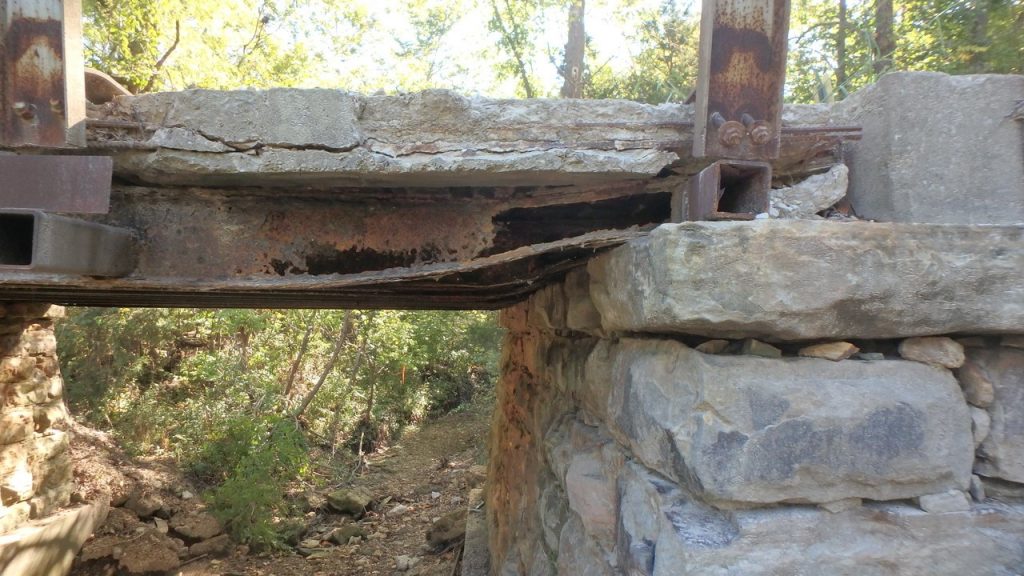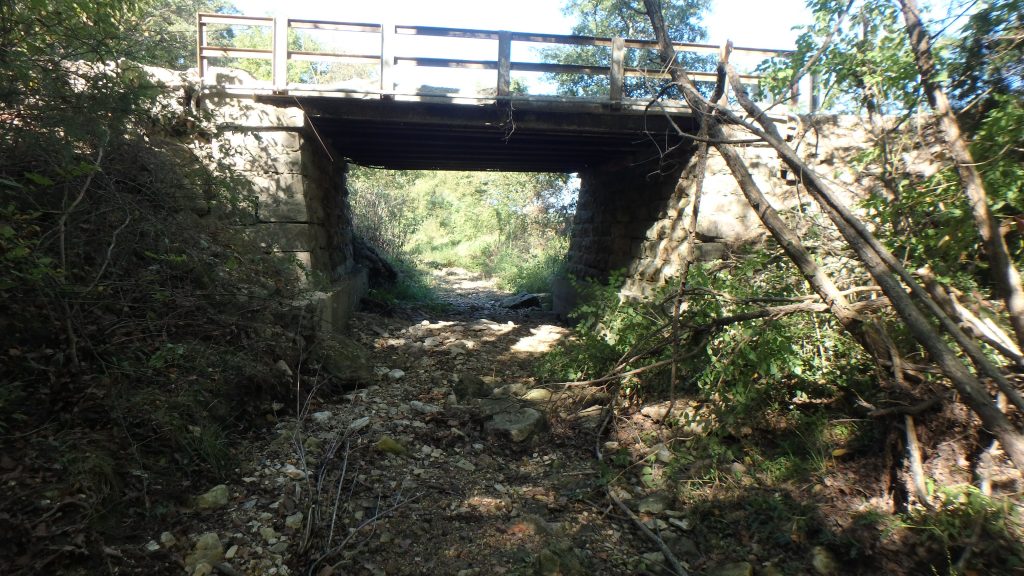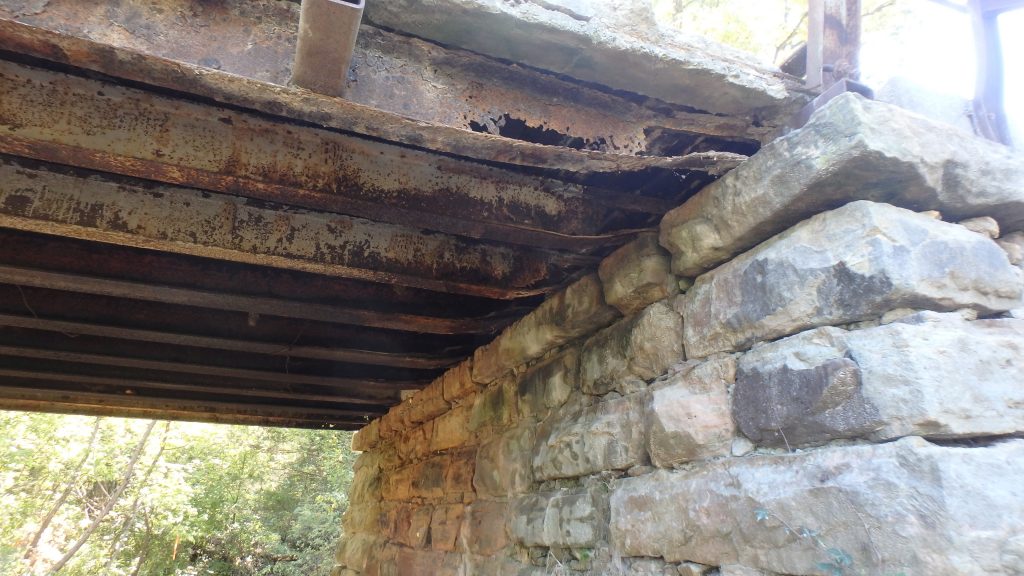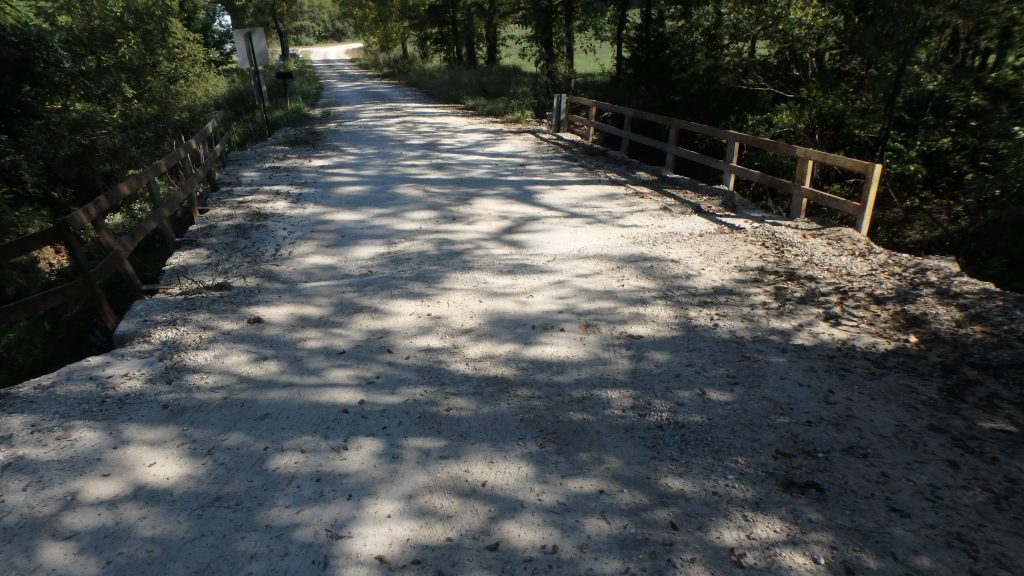December 27, 2018
White Paper: Non-Bridge Structures Should Be Inspected
Tom Lohman, PE, SE, NBIS Team Leader, gives his take on a growing issue - the decaying infrastructure of "non-bridges" in the community
I found a new contender for worst condition bridge I have seen. The reason I saw it in this condition is that it is not legally a “bridge,” so has not had the attention of regular inspections which would bring its deficiencies to light. The National Bridge Inspection Standards (NBIS) (23 CFR Part 650), for publically owned traffic bridges, defines a “bridge” as:
A structure including supports erected over a depression or an obstruction, such as water, highway, or railway, and having a track or passageway for carrying traffic or other moving loads, and having an opening measured along the center of the roadway of more than 20 feet between undercopings of abutments or spring lines of arches, or extreme ends of openings for multiple boxes; it may also include multiple pipes, where the clear distance between openings is less than half of the smaller contiguous opening.
That’s a pretty long definition for something that seems like it should be pretty simple. Getting past the complicating language, the key point here is the requirement that a bridge be “more than 20 feet” long. This requirement effectively eliminates thousands and thousands of structures across the nation with length less than 20′ from inspections as a legally mandated requirement.
Is it acceptable that structures spanning less than 20’ not be inspected? In my opinion, it is unacceptable. The structure that inspired sharing this information is under 20’ and has severe corrosion and deflection of the steel girders.


The exterior girder webs are completely corroded at the abutment. The girders are transferring load through the flanges only, causing the girders to rotate and compress. Fortunately, this bridge has one shared lane of traffic and many girders providing redundancy, which has reduced the load on the exterior girders and allowed the bridge to function, though barely.


So, if it is unacceptable to not inspect these bridges, what can be done about it? Before I answer that question, let’s understand the resource impacts of inspecting bridges per the NBIS.
State DOTs are required to assure that all local community owned traffic bridges are inspected per the NBIS at the risk of losing federal funds if the bridges are not inventoried and inspected as required. To accomplish that, some states provide oversight of the local communities, and other states do the inspections themselves. There are also specific requirements on who is qualified to inspect a bridge, which necessarily adds to the cost. The NBIS requires that a “Team Leader” plan, prepare and be on site during each inspection. A Team Leader must have an engineer’s license, or significant bridge inspection experience, and have taken weeks of training. Some bridges also require traffic control or special equipment such as manlifts and snooper trucks to access the bridge. When you consider the need to inspect hundreds of thousands of bridges nationwide every two years or more as required by the NBIS, the costs add up quickly.
Is it acceptable that structures spanning less than 20’ not be inspected? In my opinion, it is unacceptable.
Obviously, the cost of inspecting structures less than 20’ would be less than typical bridges, but it still would take significant resources to inspect these structures. They could take a couple of hours on site when there are many defects to note. Many are located in rural areas, which can add significant travel time. There is also time spent to report the findings.
Many communities across the country have implemented inspection programs for these structures; kudos to them. Many others do not even know how many such structures they own. The reality is that it takes great effort and resources for owners to inspect these structures, at either the local or state level. With budgets already stretched thin, it’s asking a lot to add inspection of these non-bridges to the to-do list for owners, but ignoring the issue isn’t an option.
I think there is room to meet in the middle; something less than the NBIS requirements for bridges but more than doing nothing. A non-bridge inventory database needs to be developed first. Perhaps the frequency of inspection could be reduced to a 5 year cycle for inspection (the NBIS standard is 2 years for every structure). Maybe a number of bridges could be randomly inspected yearly; each structure would have to be inspected at least once every five years. Of course, flexibility to inspect non-bridges in deteriorated conditions more frequently would be necessary.
I am not convinced that federal mandates are the solution, but with mandates could come funding – then again, maybe not. Perhaps an individual state or local community-led approach is the way to go. It is certainly not a problem with easy solutions, but it is a problem that needs to be addressed.
About Tom Lohman, PE, SE, NBIS Team Leader:
Tom Lohman has more than 21 years of experience as a structural engineer and inspector, specializing in highway bridges and related structures. He has extensive experience with HEC-RAS hydraulic modeling of bridge structures. Tom is qualified to discharge the duties of a Team Leader in accordance with the requirements of the National Bridge Inspection Standards (NBIS). As a former Senior Structural Engineer with the Missouri Department of Transportation, Tom has a thorough knowledge of MoDOT standards and procedures. He is also Local Public Agency certified by MoDOT giving him a thorough understanding of LPA project requirements.



